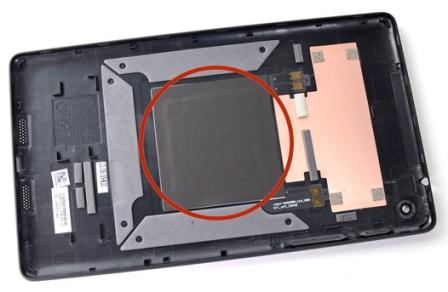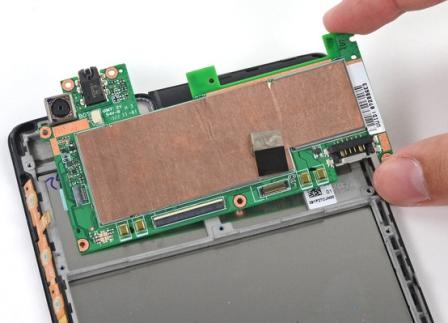Over the last year or so, Google has certainly demonstrated an ability to pull together consumer-focused hardware. The company has also shown a penchant for "arguably" improving on devices from other manufacturers. For example, from what we've seen of the Google-optimized versions of both the Samsung Galaxy S4 and HTC One, the clean Google versions are, in our opinion, to be preferred over the originals relative to the software provided and the interactions with that software -- notwithstanding the need to have to pay the huge full price for each, that is.
Of course, Google also has Motorola Mobility in hand, and at least here we will be able to get that Google-optimized interface at subsidy prices. Our advice is to wait for it.
The other relevant mobile device market for Google is, of course, the tablet space, and, in particular,r the 7-inch tablet size that has certainly captured the consumer's imagination. One of the things users typically find themselves dealing with on the smaller tablet front is either a heavily modified operating system (i.e. Amazon), or fairly difficult repair scenarios. The good news from the Google side of things is that its new Nexus 7 tablet has neither issue.
How do we know? Because the folks at iFixit have performed one of their full teardowns for the Nexus 7, which demonstrates a great deal of "finesse" from Google and its hardware manufacturing partner. The Nexus 7 is equipped with Android Jelly Bean 4.3 -- the latest and greatest version of Android, Google's excellent overall user interface -- and it is designed and built in a way that makes repairs fundamentally simple. Those are all the major points to consider when anyone looks to make a next 7-inch tablet purchasing decision.
Here are the basic tech specs for the Nexus 7:
- Android 4.3 Jelly Bean
- 1.5 GHz quad core Qualcomm Snapdragon Pro S4 processor
- 7-inch 1920x1200 IPS LCD screen
- 2 GB of RAM
- Adreno 320 GPU
- 5 MP rear-facing camera
- 1.2 MP front-facing camera
OK, perhaps the camera -- which is new -- isn't the best to be had; in fact, it seems downright silly to include one that only sports a 5 megapixel sensor, but in the end, it is cheap and still good enough to meet most snapshot/non-serious photo needs.
Easy to Open, Clean Design
The folks at iFixit are typically invested in multiple tools to open up devices. These include heat guns for melting or softening glue, micro screwdrivers, the occasional need for guitar pick inserts to hold things temporarily open (our favorite), and any number of "plastic opening tools" (as iFixit refers to them). In the case of the Nexus 7, all it took was a bit of work with one of these plastic tools to get the device opened up into its two halves. The iFixit team did confess to causing a very tiny crack in the case when prying it open -- something to be very careful about.
Inside there are only Phillips screws; nothing esoteric on the fastener front is to be found anywhere. We do note that the display screen is fully glued to the front half of the display and will require a heat gun to remove, although most likely it will be simpler just to switch the entire front half out should the LCD require repair.
The first thing the team found, as shown below, is an induction coil, meaning that the Nexus 7 supports wireless charging. It also supports NFC (Near Field Communications), so perhaps there will be some tap and pair accessories to be had as well. The Nexus 7 appears to be the first current generation tablet to support wireless charging, and of course other manufacturers will now need to add the feature to their own tablet lineups.

The original Nexus 7 was equipped with a 4326 mAh battery. The new Nexus 7 sports a battery that is rated at 3.8 V and 15 Wh, but only delivers 3950 mAh. In fact, this is good news, as it means lighter overall weight. Nor are users giving anything up in terms of battery life; the new battery combined with more efficient components actually delivers a one hour increase in battery life overall.
As shown below, the motherboard itself is easy to remove.

Overall iFixit rates ease of repair at 7 out of a possible 10 (10 being the easiest to repair). The company is probably hedging its bets since it did create that tiny crack in the case we noted earlier. Overall, the score may be closer to 8 out of 10. Either way, users won't have much to worry about should service be required. All in all, the build quality and design approach -- as well as having the latest version of Android -- strongly favors consideration for anyone thinking of buying a 7-inch tablet.
The full Nexus 7 iFixit teardown offers a great many photos as well as extensive details of its components, especially of those on the motherboard.
Edited by
Rich Steeves  QUICK LINKS
QUICK LINKS